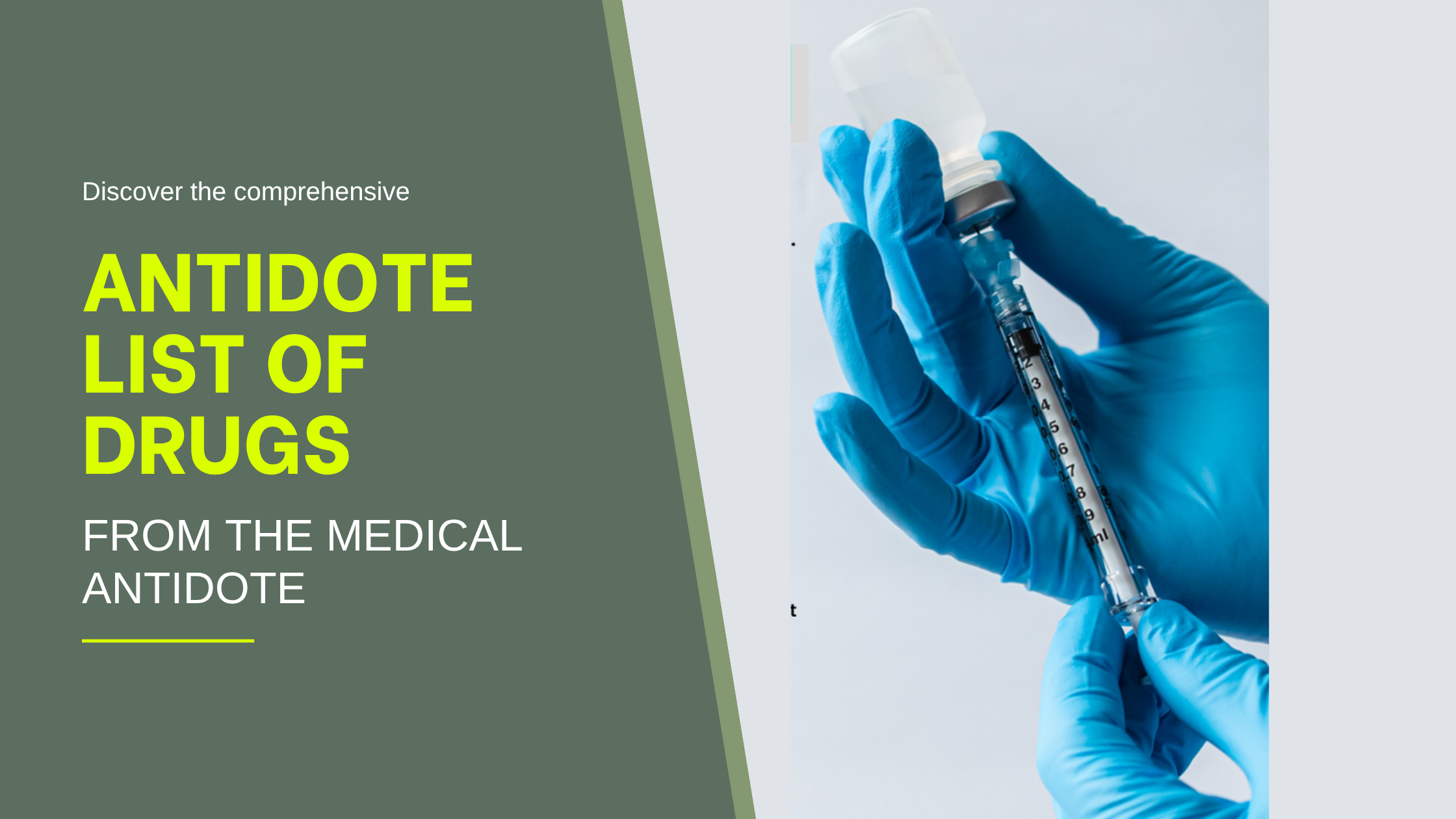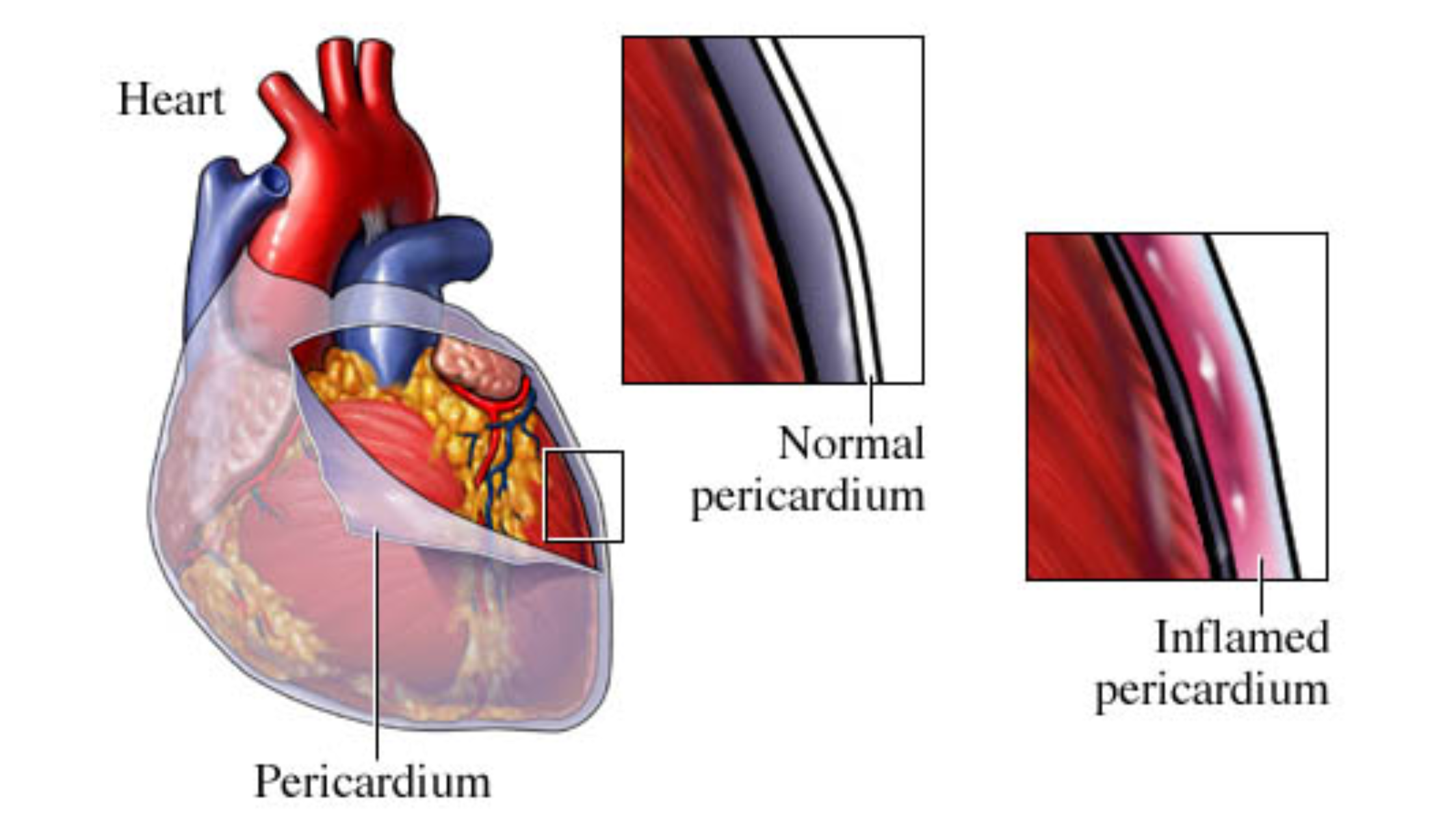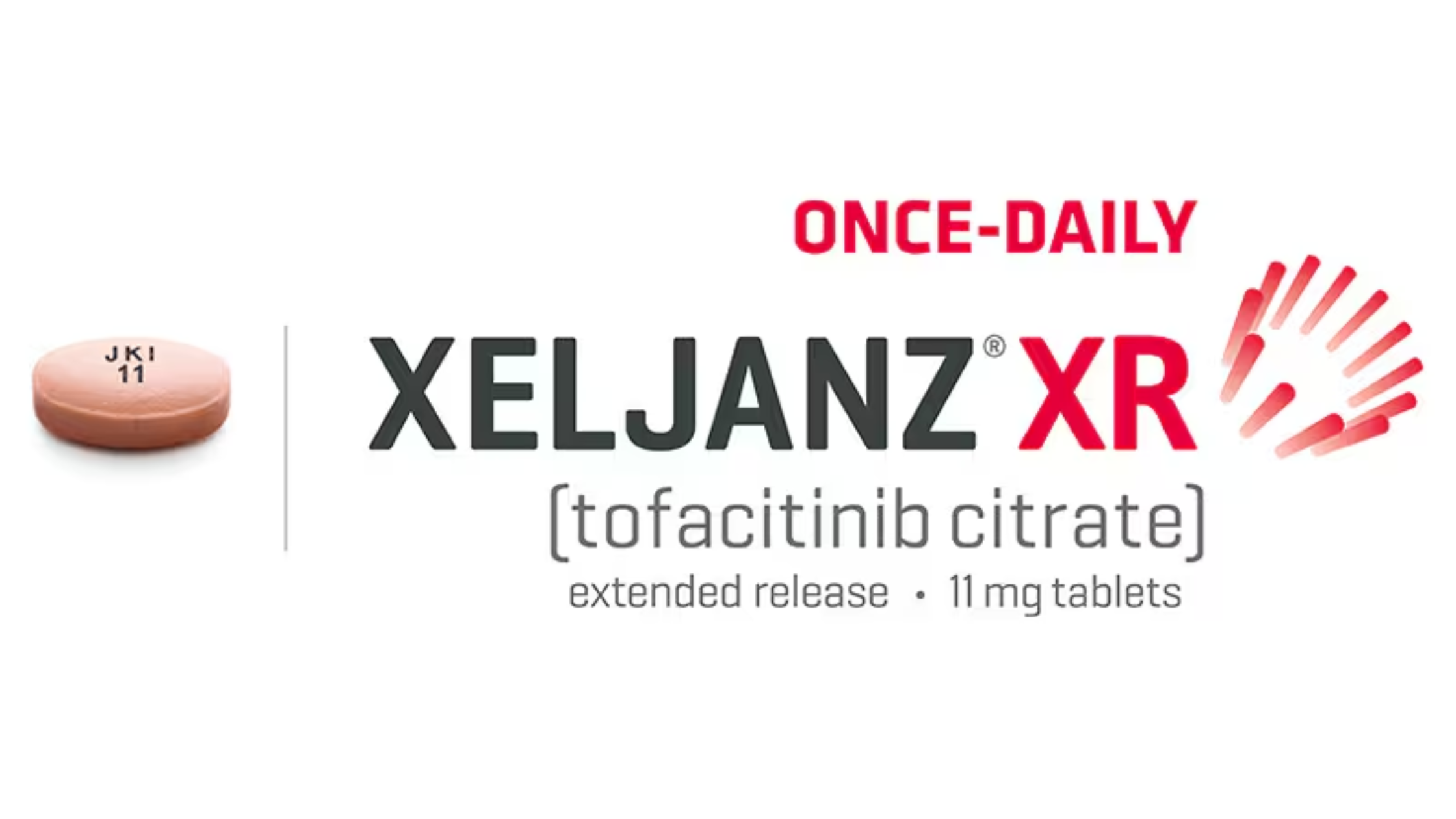The antidote list of drugs includes over 150 life-saving agents used to treat poisonings such as acetaminophen, opioid, and benzodiazepine overdose. Let’s discover the most common, intermediate, and rare antidotes and their medical uses.
The antidote list of drugs varies based on the most prevalent poisonings seen in clinical practice, such as acetaminophen, benzodiazepine, and opioid toxicity. Most credible hospitals stock these antidotes according to their frequency of use and clinical importance.
Most Common Specific Antidotes in Poisoning
Among the antidote list of drugs, N-acetylcysteine (NAC) ranks highest for treating acetaminophen overdose. It prevents your liver from failing by restoring glutathione levels. Naloxone is the frontline antidote for opioid overdose, while flumazenil reverses benzodiazepine toxicity. Activated charcoal remains a universal first-line agent for oral poisonings by binding ingested toxins.
Other frequently used antidotes include atropine for organophosphate poisoning, methylene blue for methemoglobinemia, calcium gluconate for hyperkalemia or calcium channel blocker toxicity, and protamine sulfate to reverse heparin.
Intermediate and Less Common Antidotes for Poisoning
The antidote list of drugs also includes several vital but less commonly used agents. Digoxin immune Fab treats digoxin toxicity, while fomepizole counteracts ethylene glycol and methanol poisoning.
Hydroxocobalamin is essential for cyanide poisoning, deferoxamine treats iron overload, and dimercaprol or succimer address heavy metal poisoning like lead or arsenic.
Other targeted antidotes include glucagon for beta-blocker overdose, octreotide for sulfonylurea-induced hypoglycemia, leucovorin for methotrexate toxicity, and pralidoxime—used with atropine—for organophosphate exposure. Physostigmine is used for anticholinergic toxicity, especially from tricyclic antidepressants.
Rare and Specialized Antidotes
In rare poisoning cases, specialized antidotes are indispensable. Botulinum antitoxin counters botulism, and snake antivenoms or crotalidae polyvalent immune Fab are lifesaving in snakebite envenomation.
Modern anticoagulant reversal agents include andexanet alfa for factor Xa inhibitors (rivaroxaban, apixaban) and idarucizumab for dabigatran.
Other niche antidotes in the antidote list of drugs are pyridoxine (vitamin B6) for isoniazid toxicity, thiamine (vitamin B1) for Wernicke-Korsakoff syndrome, sodium bicarbonate for tricyclic antidepressant or salicylate overdose, glucarpidase for methotrexate toxicity with renal failure, and mesna to prevent cyclophosphamide-induced hemorrhagic cystitis.
Antidote List of Drugs and Their Uses
| Antidote | Condition Treated |
|---|---|
| N-acetylcysteine (NAC) | Acetaminophen toxicity, ref. nurseslabs |
| Naloxone | Opioid overdose, ref. nurseslabs |
| Flumazenil | Benzodiazepine overdose, ref. nurseslabs |
| Activated charcoal | General gastrointestinal decontamination, ref. nurseslabs |
| Atropine | Organophosphate or carbamate poisoning, ref. nurseslabs |
| Methylene blue | Methemoglobinemia , ref. nurseslabs |
| Calcium gluconate | Hyperkalemia, calcium channel blocker overdose nurseslabs |
| Protamine sulfate | Heparin overdose, ref. nurseslabs |
| Digoxin immune fab | Digoxin toxicity, ref. nurseslabs |
| Fomepizole | Ethylene glycol, methanol poisoning, ref. nurseslabs |
| Hydroxocobalamin | Cyanide poisoning, ref. nurseslabs |
| Deferoxamine | Iron poisoning, ref. nurseslabs |
| Dimercaprol (BAL) | Heavy metal poisoning (lead, arsenic, mercury), ref. nurseslabs |
| Succimer (DMSA) | Lead poisoning, ref. nurseslabs |
| Glucagon | Beta-blocker overdose, ref. nurseslabs |
| Octreotide | Sulfonylurea-induced hypoglycemia, ref. msdmanuals |
| Leucovorin (folinic acid) | Methotrexate toxicity, ref. nurseslabs |
| Pralidoxime (2-PAM) | Organophosphate poisoning, ref. nurseslabs |
| Physostigmine | Anticholinergic toxicity, ref. nurseslabs |
| Vitamin K (Phytomenadione) | Warfarin overdose, ref. nurseslabs |
| Glucose (Dextrose 50%) | Insulin-induced hypoglycemia, ref. nurseslabs |
| Sodium bicarbonate | Tricyclic antidepressant overdose, salicylate poisoning, ref. nurseslabs |
| Thiamine (Vitamin B1) | Wernicke-Korsakoff syndrome, ref. nurseslabs |
| Pyridoxine (Vitamin B6) | Isoniazid overdose, ref. nurseslabs |
| Mesna | Cyclophosphamide-induced hemorrhagic cystitis, ref. nurseslabs |
| Glucarpidase | Methotrexate toxicity (renal impairment), ref. msdmanuals |
| Andexanet alfa | Factor Xa inhibitor reversal (apixaban, rivaroxaban), ref. msdmanuals |
| Idarucizumab | Dabigatran reversal, ref. msdmanuals |
| L-carnitine | Valproic acid toxicity, ref. msdmanuals |
| Fresh frozen plasma | Warfarin reversal (if PCC unavailable), ref. msdmanuals |
| Prothrombin complex concentrate (PCC) | Warfarin reversal, ref. msdmanuals |
| Ethanol | Ethylene glycol, methanol poisoning (alternative to fomepizole), ref. nurseslabs |
| Hemodialysis | Severe ethylene glycol, methanol, salicylate poisoning, ref. nurseslabs |
| Lipid emulsion | Local anesthetic systemic toxicity (LAST), ref. atlanticcanadapoisoncentre |
| Potassium iodide | Radiation exposure (thyroid protection), ref. msdmanuals |
| Cholestyramine | Digoxin, amanita mushroom, phenobarbital overdose, ref. cureus |
| Neostigmine | Anticholinergic toxicity (alternative to physostigmine), ref. nurseslabs |
| Phentolamine | Catecholamine excess (e.g., pheochromocytoma), ref. nurseslabs |
| Sodium thiosulfate | Cyanide poisoning (adjunct to hydroxocobalamin), ref. msdmanuals |
| Amyl nitrite | Cyanide poisoning (part of cyanide antidote kit), ref. msdmanuals |
| Sodium nitrite | Cyanide poisoning (part of cyanide antidote kit), ref. msdmanuals |
| Centruroides immune F(ab’)2 | Scorpion envenomation, ref. msdmanuals |
| Lactrodectus antivenom | Black widow spider bite, ref. msdmanuals |
| Botulinum antitoxin | Botulism, ref. msdmanuals |
| Snake antivenom | Cobra, viper, and other snake bites nurseslabs |
| Crotalidae polyvalent immune Fab | Rattlesnake and pit viper bites, ref. msdmanuals |
| D-penicillamine | Copper, lead, mercury poisoning, ref. nurseslabs |
| Prussian blue | Thallium, cesium poisoning, ref. msdmanuals |
| Calcium chloride | Severe hypocalcemia, fluoride toxicity, ref. nurseslabs |
| Insulin (high-dose) | Beta-blocker, calcium channel blocker overdose, ref. cureus |
| Isoproterenol | Beta-blocker overdose (refractory to glucagon), ref. cureus |
| Magnesium sulfate | Torsades de pointes, eclampsia, ref. cureus |
| Dextrose with thiamine | Alcohol-related hypoglycemia (to prevent Wernicke’s), ref. nurseslabs |
| Whole bowel irrigation | Iron, lithium, sustained-release drug overdose, ref. nurseslabs |
| Multiple-dose activated charcoal | Theophylline, phenobarbital, carbamazepine overdose, ref. nurseslabs |
| Urinary alkalinization | Salicylate, phenobarbital overdose, ref. nurseslabs |
| Urinary acidification | Amphetamines, phencyclidine (PCP) overdose (rarely used), ref. nurseslabs |
| Hemoperfusion | Theophylline, valproic acid, carbamazepine overdose, ref. nurseslabs |
| Plasma exchange | Multiple drug overdoses with high protein binding, ref. nurseslabs |
| Recombinant factor VIIa | Warfarin reversal (if PCC unavailable), ref. nurseslabs |
| Tranexamic acid | Anticoagulant-related bleeding (adjunct), ref. nurseslabs |
| Vitamin C (ascorbic acid) | Methemoglobinemia (adjunct to methylene blue), ref. nurseslabs |
| Methylene blue (low dose) | Ifosfamide-induced encephalopathy, ref. nurseslabs |
| Flumazenil (cautious use) | Benzodiazepine overdose in non-dependent patients, ref. msdmanuals |
| Naloxone (continuous infusion) | Opioid overdose with prolonged-acting agents, ref. nurseslabs |
| N-acetylcysteine (IV) | Acetaminophen toxicity (IV formulation), ref. msdmanuals |
| N-acetylcysteine (oral) | Acetaminophen toxicity (oral formulation), ref. msdmanuals |
| Glucagon (IV) | Beta-blocker overdose (IV administration), ref. nurseslabs |
| Glucagon (IM) | Severe hypoglycemia (if IV access unavailable), ref. nurseslabs |
| Dextrose (oral) | Mild hypoglycemia, ref. nurseslabs |
| Dextrose (IV) | Moderate to severe hypoglycemia, ref. nurseslabs |
| Thiamine (IM) | Thiamine deficiency (if IV unavailable), ref. nurseslabs |
| Thiamine (oral) | Mild thiamine deficiency, ref. nurseslabs |
| Pyridoxine (IM) | Isoniazid overdose (if IV unavailable), ref. nurseslabs |
| Pyridoxine (oral) | Vitamin B6 deficiency, ref. nurseslabs |
| Folic acid | Methotrexate toxicity (adjunct to leucovorin), ref. pmc.ncbi.nlm.nih |
| Folinic acid | Methotrexate toxicity (alternative name for leucovorin), ref. msdmanuals |
| Calcium disodium EDTA | Lead poisoning, ref. nurseslabs |
| Dimercaptosuccinic acid (DMSA) | Lead poisoning, ref. nurseslabs |
| Unithiol (DMPS) | Mercury, arsenic poisoning, ref. nurseslabs |
| Penicillamine | Wilson’s disease, heavy metal poisoning, ref. nurseslabs |
| Triethylene tetramine (trientine) | Wilson’s disease, ref. nurseslabs |
| Zinc acetate | Wilson’s disease (maintenance therapy), ref. nurseslabs |
| Ammonium tetrathiomolybdate | Wilson’s disease (experimental), ref. nurseslabs |
| Sodium zirconium cyclosilicate | Hyperkalemia, ref. nurseslabs |
| Patiromer | Hyperkalemia, ref. nurseslabs |
| Calcium polystyrene sulfonate | Hyperkalemia (older agent), ref. nurseslabs |
| Insulin with glucose | Hyperkalemia (shifts potassium intracellularly), ref. nurseslabs |
| Albuterol (nebulized) | Hyperkalemia (adjunctive), ref. nurseslabs |
| Sodium bicarbonate | Hyperkalemia (in metabolic acidosis), ref. nurseslabs |
| Kayexalate | Hyperkalemia (largely replaced by newer agents), ref. nurseslabs |
| Digoxin antibody fragments | Digitoxin toxicity, ref. msdmanuals |
| Anti-digoxin Fab | Oleander poisoning, ref. msdmanuals |
| Anti-digoxin Fab | Foxglove poisoning, ref. msdmanuals |
| Ethanol (oral) | Methanol poisoning (if fomepizole unavailable), ref. nurseslabs |
| Ethanol (IV) | Ethylene glycol poisoning (if fomepizole unavailable), ref. nurseslabs |
| Fomepizole (IV) | Toxic alcohol poisoning, ref. nurseslabs |
| Fomepizole (oral) | Not available (IV only), ref. nurseslabs |
| Hydroxocobalamin (IV) | Cyanide poisoning, ref. calpoison |
| Hydroxocobalamin (IM) | Not standard (IV preferred), ref. calpoison |
| Sodium thiosulfate (IV) | Cyanide poisoning, ref. msdmanuals |
| Sodium thiosulfate (oral) | Not effective (IV required), ref. msdmanuals |
| Amyl nitrite (inhaled) | Cyanide poisoning (historical use), ref. msdmanuals |
| Sodium nitrite (IV) | Cyanide poisoning, ref. msdmanuals |
| Calcium gluconate (IV) | Hydrofluoric acid exposure, ref. nurseslabs |
| Calcium chloride (IV) | Severe hypocalcemia, cardiac arrest, ref. nurseslabs |
| Calcium chloride (topical) | Hydrofluoric acid skin exposure, ref. nurseslabs |
| Magnesium sulfate (IV) | Eclampsia, torsades de pointes, ref. nurseslabs |
| Magnesium sulfate (IM) | Eclampsia (if IV unavailable), ref. nurseslabs |
| Magnesium sulfate (oral) | Constipation (not for toxicity), ref. nurseslabs |
| Activated charcoal (multiple dose) | Theophylline, dapsone, phenobarbital, ref. nurseslabs |
| Whole bowel irrigation (PEG) | Iron, lithium, body packers, ref. nurseslabs |
| Lipid emulsion (IV) | Bupivacaine, lidocaine toxicity, ref. atlanticcanadapoisoncentre |
| Lipid emulsion (oral) | Not used, ref. atlanticcanadapoisoncentre |
| Glucagon (subcutaneous) | Not effective for overdose, ref. nurseslabs |
| Glucagon (intranasal) | Not approved for overdose, ref. nurseslabs |
| Naloxone (intranasal) | Opioid overdose, ref. (first-line in community) nurseslabs |
| Naloxone (subcutaneous) | Opioid overdose (alternative route), ref. nurseslabs |
| Flumazenil (IV) | Benzodiazepine overdose, ref. nurseslabs |
| Flumazenil (IM) | Not standard, ref. nurseslabs |
| Atropine (IV) | Organophosphate poisoning, ref. nurseslabs |
| Atropine (IM) | Organophosphate poisoning (if IV unavailable), ref. nurseslabs |
| Atropine (oral) | Not used for poisoning, ref. nurseslabs |
| Pralidoxime (IV) | Organophosphate poisoning, ref. nurseslabs |
| Pralidoxime (IM) | Not standard, ref. nurseslabs |
| Physostigmine (IV) | Anticholinergic toxicity, ref. nurseslabs |
| Physostigmine (IM) | Not standard, ref. nurseslabs |
| Neostigmine (IV) | Myasthenia gravis, anticholinergic toxicity, ref. nurseslabs |
| Neostigmine (IM) | Myasthenia gravis, ref. nurseslabs |
| Vitamin K (oral) | Warfarin reversal (chronic), ref. nurseslabs |
| Vitamin K (IV) | Warfarin reversal (acute), ref. nurseslabs |
| Vitamin K (subcutaneous) | Not recommended, ref. (unpredictable absorption) nurseslabs |
| Protamine (IV) | Heparin reversal, ref. nurseslabs |
| Protamine (IM) | Not used, ref. nurseslabs |
| Dextrose (PO) | Mild hypoglycemia, ref. nurseslabs |
| Dextrose (IV push) | Severe hypoglycemia, ref. nurseslabs |
| Dextrose (IV infusion) | Persistent hypoglycemia, ref. nurseslabs |
| Thiamine (IV) | Wernicke’s encephalopathy, ref. nurseslabs |
| Thiamine (IM) | Thiamine deficiency, ref. nurseslabs |
| Pyridoxine (IV) | Isoniazid overdose, ref. nurseslabs |
| Pyridoxine (IM) | Isoniazid overdose, ref. nurseslabs |
| Folic acid (oral) | Folate deficiency, ref. pmc.ncbi.nlm.nih |
| Folic acid (IV) | Methotrexate toxicity (adjunct), ref. pmc.ncbi.nlm.nih |
| Leucovorin (IV) | Methotrexate toxicity, ref. nurseslabs |
| Leucovorin (oral) | Methotrexate toxicity (if IV unavailable), ref. nurseslabs |
| Mesna (IV) | Cyclophosphamide toxicity, ref. nurseslabs |
| Mesna (oral) | Not standard, ref. nurseslabs |
| Glucarpidase (IV) | Methotrexate toxicity, ref. msdmanuals |
| Andexanet alfa (IV) | Factor Xa inhibitor reversal, ref. msdmanuals |
| Idarucizumab (IV) | Dabigatran reversal, ref. msdmanuals |
| L-carnitine (IV) | Valproic acid toxicity, ref. msdmanuals |
| L-carnitine (oral) | Carnitine deficiency, ref. msdmanuals |
| Fresh frozen plasma (FFP) | War |
Antidotes Summary
The above comprehensive and complete antidote list of drugs serves as a cornerstone in emergency and toxicology medicine, encompassing common lifesavers like N-acetylcysteine, naloxone, and flumazenil, as well as specialized agents for rare poisonings. Understanding their indications ensures faster, more effective responses in cases of drug overdose or toxic exposure.




